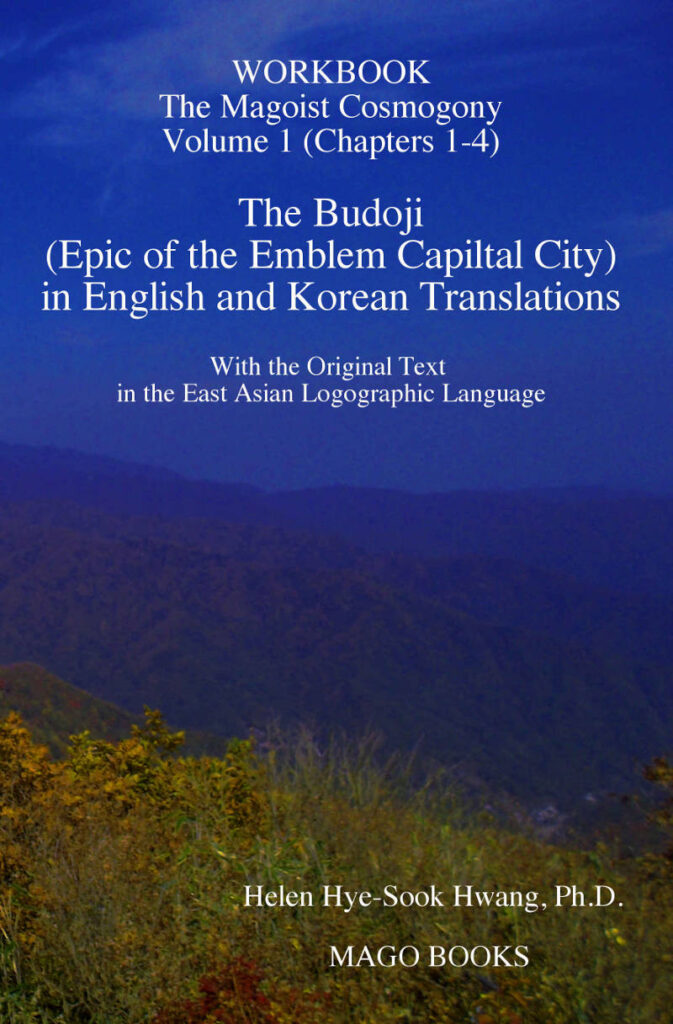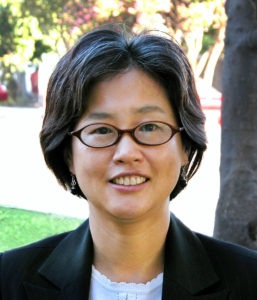
The Magoist Cosmogony (Chapters 1-4) Budoji Workbook (Volume 1): The Budoji (Epic of the Emblem Capital City) in English and Korean Translations with the Original Text in the East Asian Logographic Language
Arrived June 8, 2020
Book size: 6×9
Total pages: 97
Preorder available via email (return2mago@gmail.com). For the BW print book, overseas shipping is confined to the Amazon overseas distributions (Australia is unavailable). Please indicate your order item and your shipping address for the print book. Mago Books will ask you to pay as a form of donation.
PDF (US$9.99)
Abstract: The Magoist Cosmogony recounted in the Budoji’s first four chapters presents Our Story of Mago, the Creatrix, the Story of All in Mago Stronghold, the Earth. The Origin Story of Mago is a soteriological kit for humans to remember, verify, and pass it to forthcoming generations. The Budoji is the Book of Mago, the Creatrix, written in a systematically cogent narrative. The Budoji testifies to the forgotten mytho-history of Magoism from which modern civilizations are derived. Without the Budoji, the Origin Story of the Creatrix, would have remained unknown today. Without the Budoji, Magoism, the Way of the Creatrix, would have remained unnamed. The Budoji teaches, guides, and awakens people to the metamorphic reality of WE/HERE/NOW. Alleged to have been written in the early 5th century of Silla (57 BCE-935 CE), the Budoji ripe with noble (read matricentric) terms and symbols is salvific, offering matricentric soteriology. My task is to make the Budoji known to the world so that we can dis-cover the story of the Budoji as OUR STORY. In the Budoji, we are told why and how to live peacefully in harmony with all other people and all other species on earth and beyond. It is very slippery to write about it because of its multi-valent meaning, too bedazzling to articulate. Once told, however, the Budoji will begin to ferment something in your mind, something that has been with us all along and everywhere but made unseen. The nine-volume workbook series is an effort to make the unseen seeable and palpable. The Budoji Workbook allows you to interact with the verses of each chapter. You can take notes, draw images and symbols, or compose songs in the worksheets included after each chapter and in the Appendix. Personalized worksheets can serve as milestones as you proceed in the reading. Ultimately, the Budoji Workbooks invites you to write, draw, or sing the storyline of each chapter in your own words and means. No preparation is required to read the Budoji. Once read, the Budoji will begin to speak to you and guide you from within.
Excerpt from Introduction to The Budoji Workbook (Volume 1): The Magoist Cosmogony (Chapters 1-4)
As the Budoji’s verses are richly charged with symbols and imagery as well as noble matricentric terms, the Budoji Workbook can be used as a daily reading book. Users determine the speed and the dosage. Or it can be used as the guiding text for your self-directed “retreat” practice.
Technically, the Budoji Workbook is designed to be an interactive book and a building block for Magoists to self-discover and stay animated in the wake of the covid19 pandemic. Simply put, the Budoji Workbook is here for you to regain the unsullied joy of knowing the Great Mother of All amidst the escalating chaos in the world. All verses of a chapter are numbered. For example, Budoji 1:10 indicates the 10th verse in Chapter 1. Each chapter includes two worksheets. The Worksheet 1, listing all verses of the chapter in the first column of a table, allows you to use the second column for your associations, songs, or imaginations, invoked by the verse. The Worksheet 2 provides a space for your creative activity including writing the storyline of the whole chapter of a salient theme from the chapter in your own words or illustrate in place of writing. The activity can be conducted with your child or within a circle of friends. By all means, the Budoji Workbook encourages children and the youth to read along.
Last but not least, the Budoji Workbook asks readers to complete the two worksheets of a chapter or multiple chapters and submit them to Dr. Helen Hye-Sook Hwang electronically (return2mago@gmail.com) or by snail mail (785 Melody Ln, Lytle Creek, CA 92358). You may like to print out the worksheet pages in Appendix to write or draw on them in person. Or use the Word file version of the worksheets available upon request via email. Dr. Hwang will respond to your materials and may suggest some creative ideas. Anyone who submit their worksheets will be awarded the PDF version of the forthcoming Budoji Workbook volume and a participation in the Reading the Budoji online course for free hosted by Mago Academy (www.magoacademy.org). Also you may be invited to the discussion forum of the Budoji illustration book project. Your materials will be credited to you, when mentioned and/or published by Dr. Hwang in Return to Mago E-Magazine (www.magoism.net) or another space of the Mago Work. Foremost, it is an opportunity for you to submit your own storytelling of a Budoji’s Story for publication. Mago Books seeks writers and illustrators for the Budoji illustration book project that involves nine volumes (www.magobooks.com).
See here for (Book Excerpt) Introduction
Table of Contents:
INTRODUCTION
INTRODUCTION TO VOLUME 1 THE MAGOIST COSMOGONY (CHAPTERS 1-4)
CHAPTER ONE
CHAPTER TWO
CHAPTER THREE
CHAPTER FOUR
APPENDIX
About the Author: Helen Hye-Sook Hwang

Helen Hye-Sook Hwang, Ph.D. is scholar, activist, and advocate of Magoism, anciently originated tradition that venerates Mago as the Great Goddess. She earned her MA and Ph.D. in Religion with emphasis on Feminist Studies from Claremont Graduate University, CA. She also studied toward an MA degree in East Asian Studies at UCLA, CA. Hwang has taught for universities in California and Missouri, U.S.A. Since 2012, Dr. Hwang has founded and directed The Mago Work whose branches include the Return to Mago E-Magazine (http://magoism.net), Mago Academy (http://magoacademy.org), and Mago Books (https://www.magobooks.com). She also co-founded Gynapedia (https://gynapedia.magoacademy.org) and Mago Pool Circle (https://mpc.magoacademy.org) to broaden The Mago Work. She co-edited and published She Rises: Why Goddess Feminism, Activism, and Spirituality? Volume 1 (Mago Books, 2015), She Rises: How Goddess Feminism, Activism and Spirituality? Volume 2 (Mago Books, 2016) as well as Celebrating Seasons of the Goddess (Mago Books, 2017). Also authored The Mago Way: Re-discovering Mago, the Great Goddess from East Asia (Mago Books, 2015) and Mago Almanac: 13 Month 28 Day Calendar annually since 2018.

You must be logged in to post a comment.